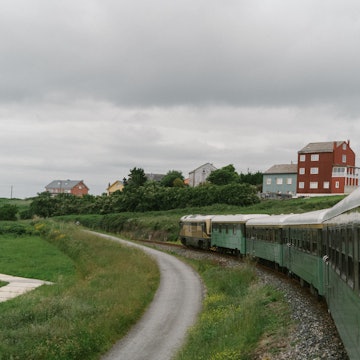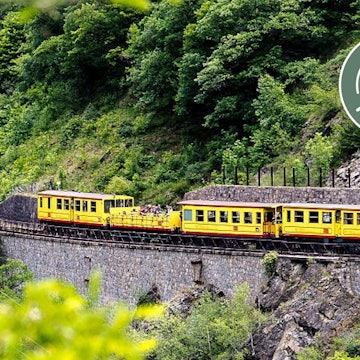
Take a train through the misty Celtic landscapes of northern Spain and Portugal

May 5, 2023 • 7 min read

The Linha Celta/Tren Celta trains will take you to the greenest parts of Spain and Portugal © Austin Bush
Think of the Iberian peninsula, and you’ll have quick visions of Portugal’s fado and tile-fronted buildings, and Spain’s bulls and matadors.
Yet there’s a corner of the peninsula that’s more James Joyce than Miguel de Cervantes. Portugal’s northernmost region and Spain’s northwestern corner are lands united by a landscape that’s perpetually green, and a common culture that can be traced back to Celtic tribes who inhabited the area until the beginning of the Christian era.
To celebrate this shared heritage, Comboios de Portugal (Portugal’s national train service, known as CP) and Renfe (Spain’s equivalent) have joined forces on the Linha Celta/Tren Celta, a train line that links Porto, in Portugal, and Vigo, in Spain. Allured, I hopped on board, extending my itinerary all the way to A Coruña, close to Iberia’s northernmost point. Along the way, I stopped in at places that express this region’s fascinating shared Celtic heritage.

Porto–Viana do Castelo
My journey starts at 8:13am at Porto’s Campanhã Station on a three-carriage CP commuter train. It’s bound for Vigo, just across the border in Spain – but I’m hopping off at Viana do Castelo, a provincial Portuguese city with outsized charm and some intriguing traces of Celtic culture.
An hour north of Porto, the landscape fools me into thinking I’m in Ireland: it’s emerald green and misty, with granite villas more common than tile-fronted houses. At certain points I see people walking along the train tracks: pilgrims en route to Santiago de Compostela.
The city’s historical center takes the form of long streets lined with stately tile-fronted buildings that end in seemingly hidden churches and squares. It’s possible to approach Viana as a day trip, leaving your bags at the local tourism office and exploring and eating before catching the late train to Vigo at 8:14pm. Yet it’s such a charming city that I opted to stay overnight.

It’s in Viana that I began to see a shift in people’s appearance, with blue eyes and red hair increasingly common. Yet the most palpable link with Celtic culture is the Citânia de Santa Luzia, the misty, mysterious ruins of a hill fort that date back to the 4th century BCE. The Citânia is perched at the top of the hill that overlooks the city, and during summer (from June to September, 9am–8pm) can be reached via a funicular. Otherwise, it’s a very, very long walk uphill; consider a taxi from the train station (around €20 round trip, including waiting time). Those interested in Celtic culture could also consider renting a car and driving the 50km to Castro de Santa Trega, just across the Spanish border and one of the largest and best-preserved hill forts in the region.
Back in town, Museu do Traje is dedicated entirely to the area’s distinctive clothing. It’s one of the best small museums I’ve been to, with beautiful displays and old photos, all featuring clear explanations in English. And it would be a food crime to visit Viana without a bite at Manuel Natário. This 85-year-old bakery specializes in bolas de Berlim, fried donuts filled with egg cream and dusted with cinnamon sugar, which have a cult reputation among pastry nerds in Portugal (yes, they exist).

Viana do Castelo–Vigo
At 9:16am the next morning, I board my next train. Immediately north of town, the train skirts the coast, as it’s sprayed by foam from the rough sea. At Caminha, the train turns inland, hugging the east bank of the Minho River until it crosses a bridge and enters Spain at Tui.
Just over an hour later, I arrive in Vigo. Seemingly forgotten in the country’s northwest corner, surrounded by water and perpetually rainy and green, it might be the Seattle of Spain. At one time, it was once country’s fastest-growing city, and urban sprawl has unfortunately masked some of its charm. Yet give it enough time and you’ll find that Vigo is filled with super-friendly folks who are actually happy to see international tourists.
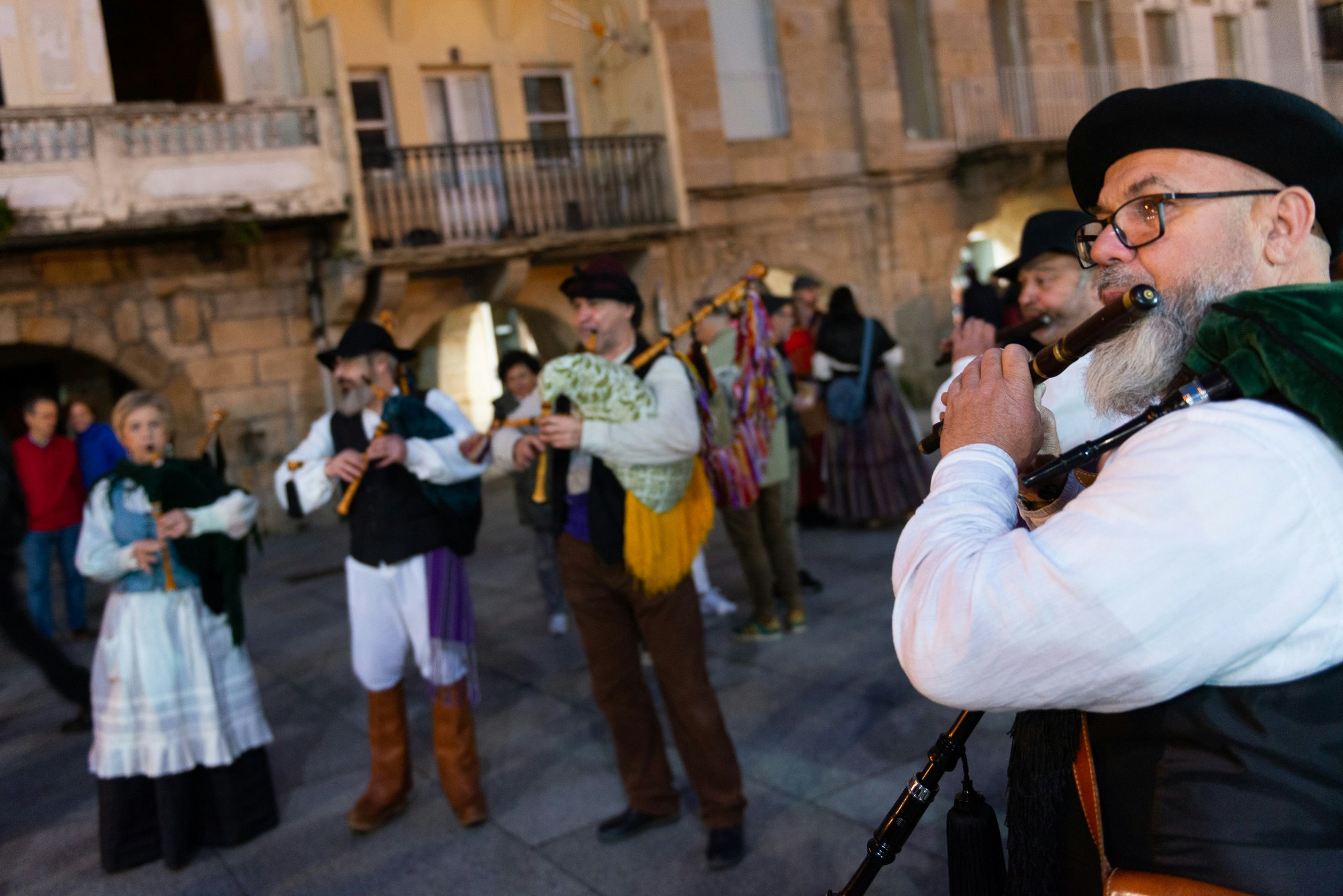
Vigo’s most prominent Celtic landmark is its castro, the Spanish term for the hilltop forts common in the region. Alternatively, you can stay in the 21st century at MARCO, the city’s excellent contemporary-art museum. Located in a former cannery on a strip of white sand outside the city center, the Museo do Mar exhibits artifacts that go back as far as the Celtic era – but the emphasis is on fishing, with a deep dive into Galicia’s canning industry. Indeed, Galicia is home to some of the world’s best seafood, and Vigo is a great place to try it. Visit Rúa Pescadería, where you can hop from bar to bar, eating oysters and drinking albariño along the way.
Vigo is also well-situated for a day trip to the Ciés Islands, 45 minutes away by boat. The islands are part of a protected area have beautiful beaches as well as opportunities for walking and swimming.

Vigo–Santiago de Compostela
The next morning, I walk to Vigo’s other train station, the mall-bound Urzáiz, for my train on to Santiago de Compostela. The route is inland, and the high-speed Renfe train passes through rolling hills, river valleys and granite homes linked to seemingly endless small vineyards.
Arriving in Santiago an hour later, I feel obliged to make a visit to the Praza do Obradoiro to watch pilgrims arriving at their destination, the dramatic scene set to a soundtrack of bagpipe-playing buskers. If that sound appeals, hit Casa das Crechas, where live folk jams held on Wednesdays often delve into Celtic themes and melodies.
Santiago is amazing for destination-free wandering. To get your bearings, head to Museo do Pobo Galego, an excellent museum dedicated to local culture. Though there’s very little information in English, the displays feature charmingly antiquated illustrations. There’s an entire section on bagpipe making, and the first floor has displays on the area’s early history. Expect a good crash course in the area’s Celtic roots via models of castros, as well as examples of petroglyphs and other Celtic art.
For a more contemporary experience with Celtic culture, align your visit with the Festival of St John, in late June, and take part in the solstice bonfires that are meant to drive away the city’s meigas, witches with origins in Celtic beliefs. During the rest of the year, several outfits offer guided night tours of Santiago de Compostela that focus on its dark spirits. Alternatively, rent a car and drive to Castro de Baroña, maybe Galicia’s most famous – and impressive – castro, a former Celtic-era village perched on a semi-island.
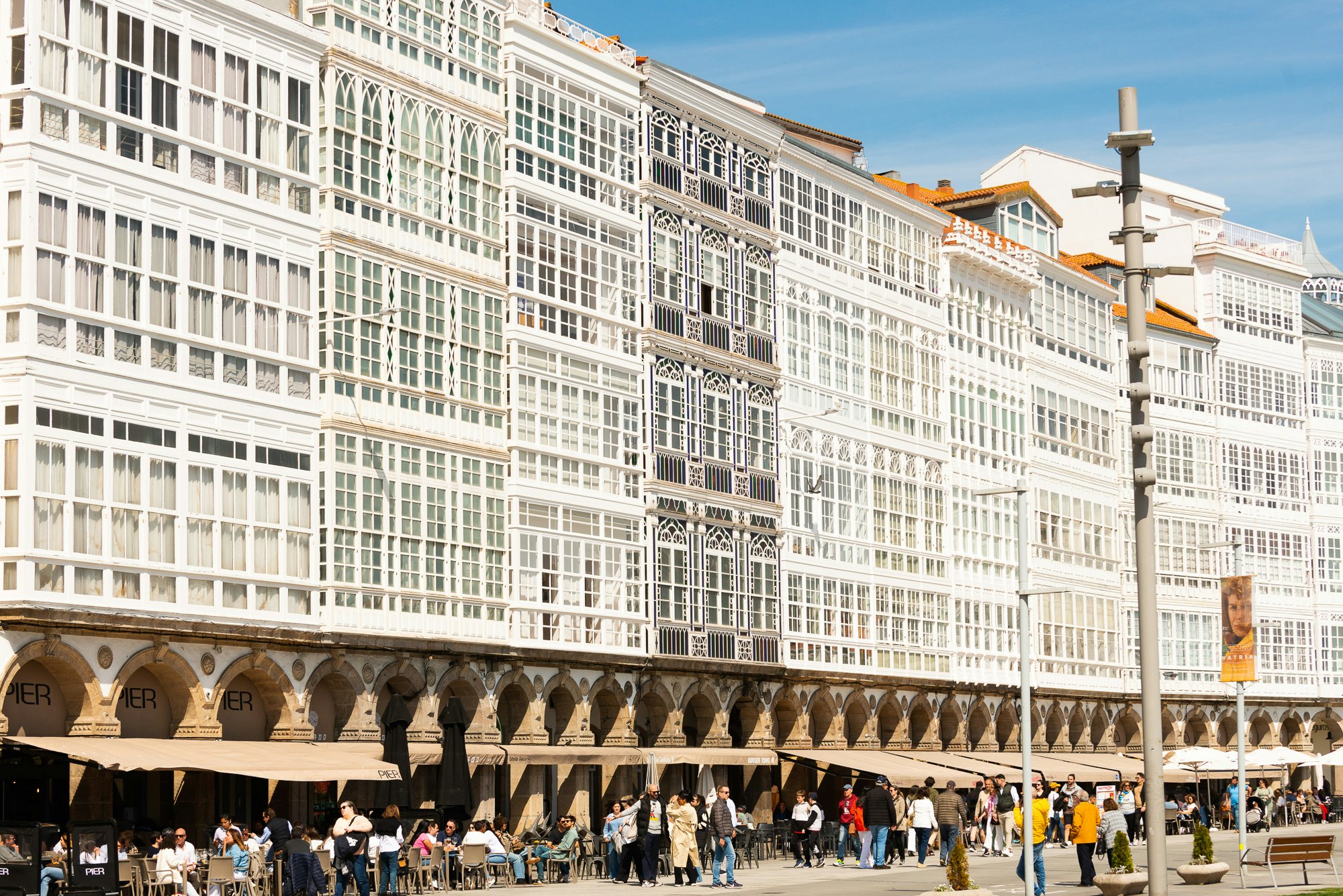
Santiago de Compostela–A Coruña
Via a high-speed train, the end point of my journey is less than a half hour away.
A Coruña, located on the northern coast of Iberia, is a city surrounded by water; Playa del Orzán is a beautiful, expansive beach that will likely be a short walk from your hotel. Head north from there to encounter the rocky peninsula that’s home to the Tower of Hercules, the world’s only existing Roman lighthouse – and a landmark with origins in a story that blends Greek, Roman and Celtic lore. At the base of the path that leads up to the lighthouse is a statue dedicated to Breogán, said to be an important ancestor to the Celtic people. A brief walk away is Menhirs for Peace, a 1994 homage to the megaliths found across the Celtic realm. Since this peninsula is home to lots of paths and small beaches, you can treat it as an entire half-day trip.
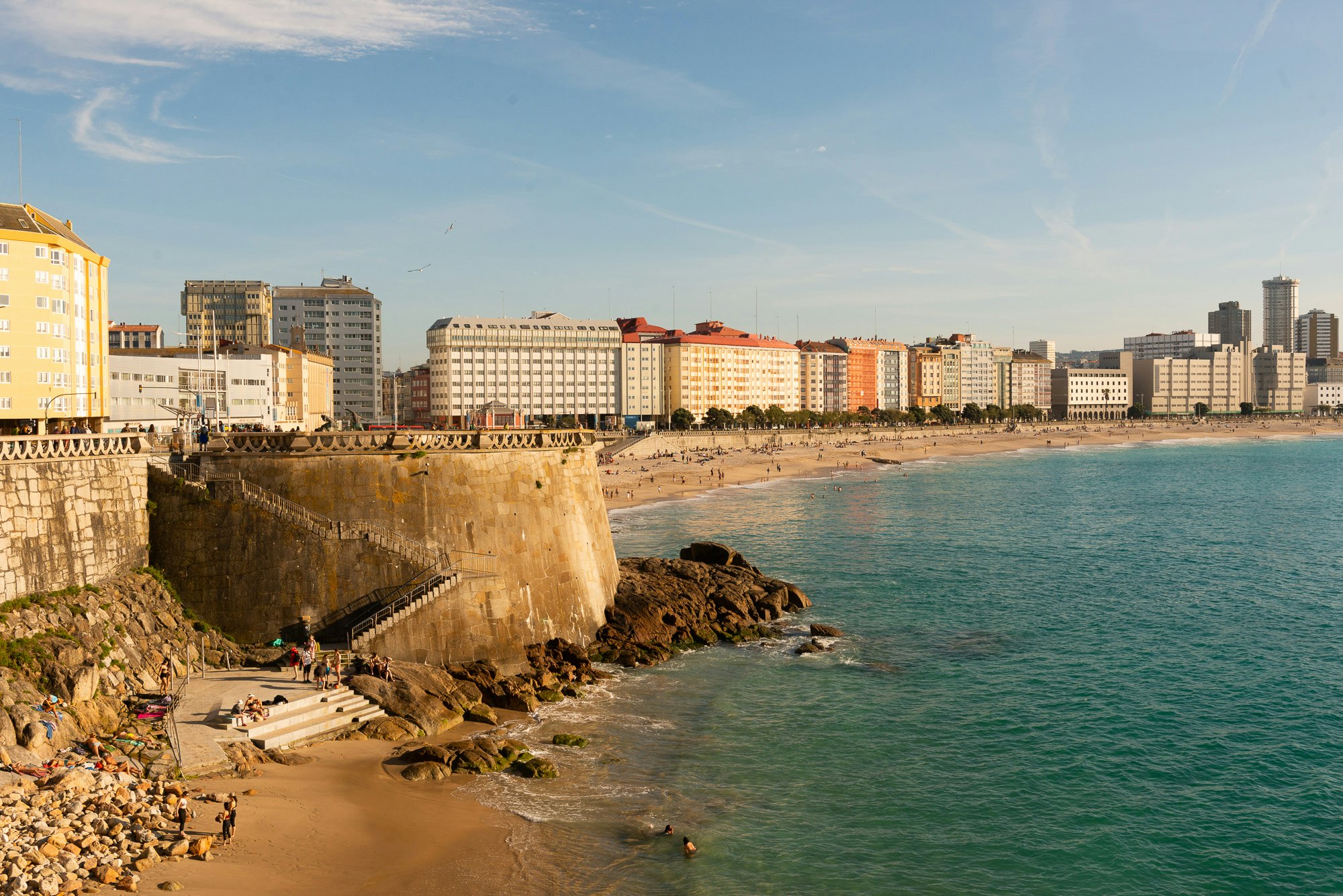
For a relatively remote, medium-sized town, A Coruña features a disproportionate amount of art. When I was in town, the offerings included a massive retrospective of a fashion photographer’s work, a fascinating exhibition on Polaroid photography at the Fundación Barrié and a Picasso show at the Museo de Belas Artes. It’s also a fun city, with Rúa Galera in the center of town a buzzy strip with dozens of bars and restaurants.
Dedicated castro fans should consider a side trip to Castro de Borneiro, located 65km west of the city, and thought to be one of Galicia’s most extensive Celtic hilltop settlements.

Practical information about the Linha Celta
Although both countries handle the trains on this route, ticket purchases are generally done via Spain’s Renfe; download its app to make purchases more convenient. Keep in mind that there’s a one-hour time difference between Portugal and Spain. A full price ticket from Porto to Vigo costs €14.95 per adult.












